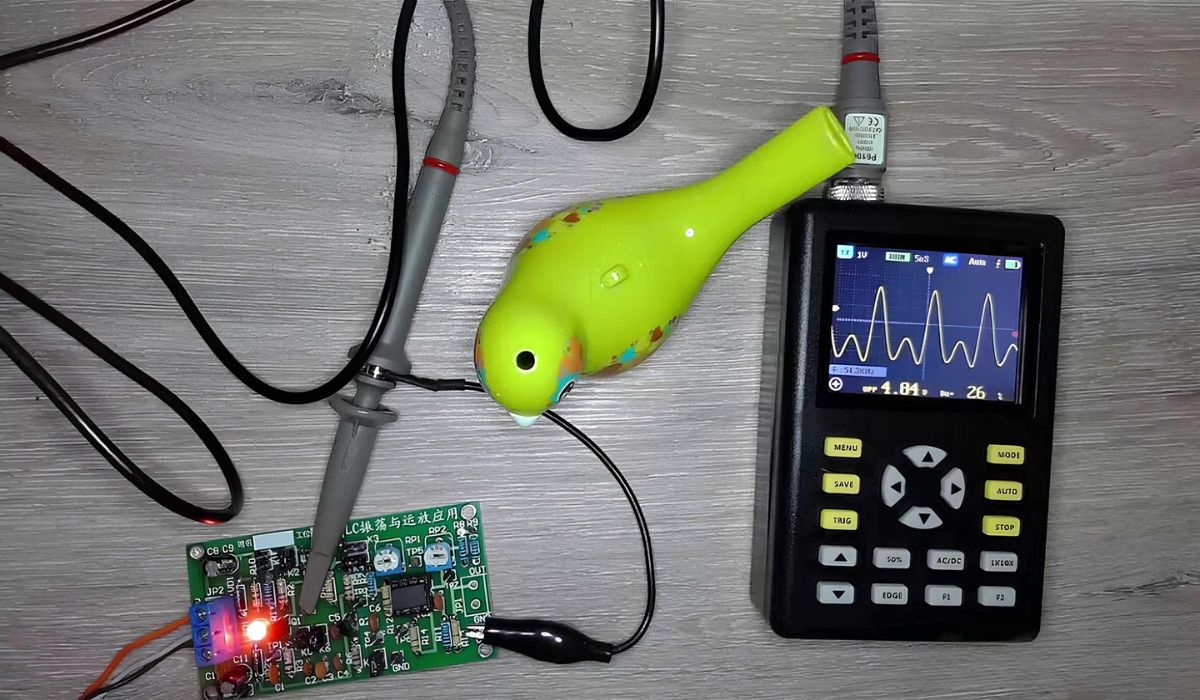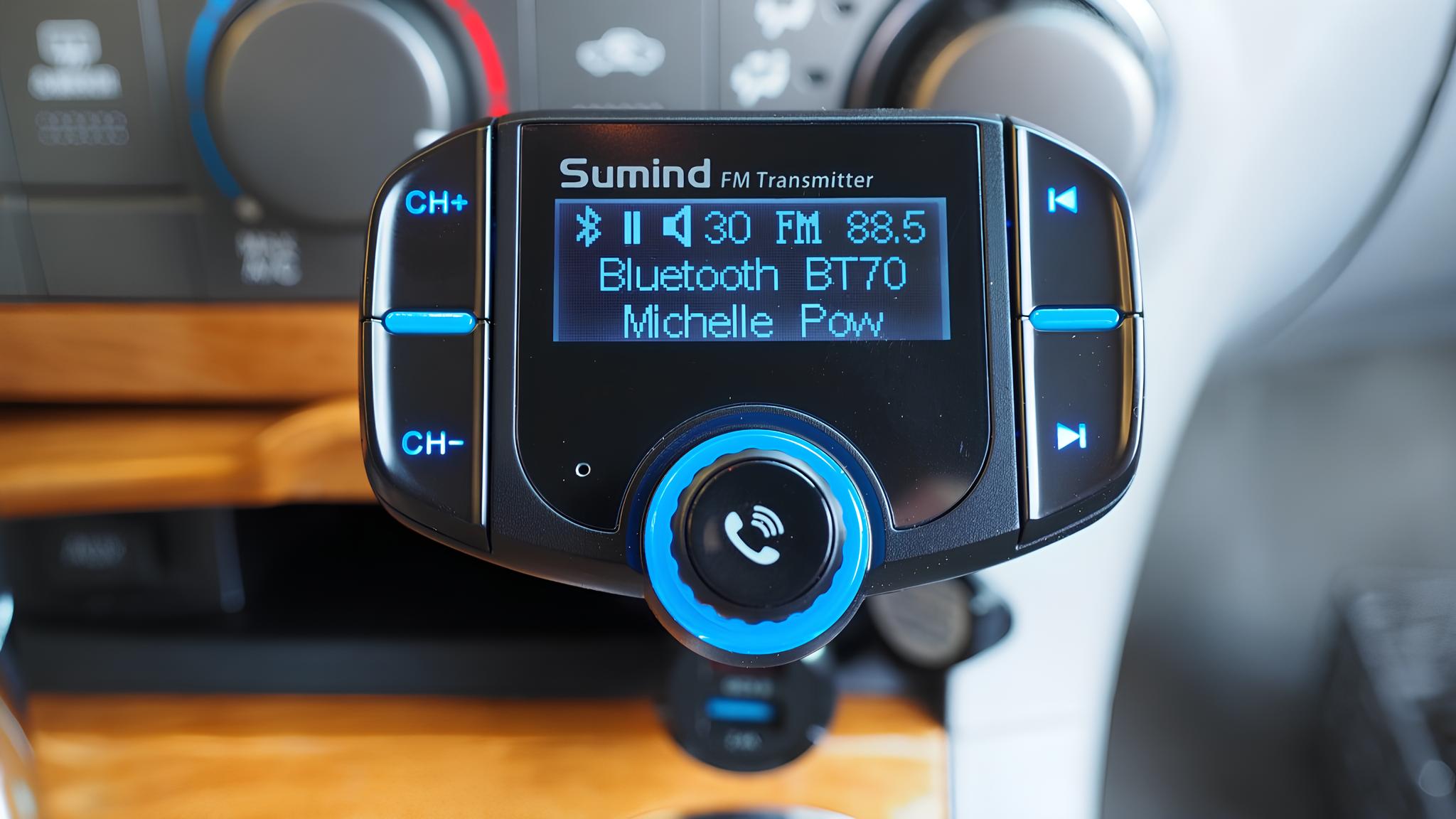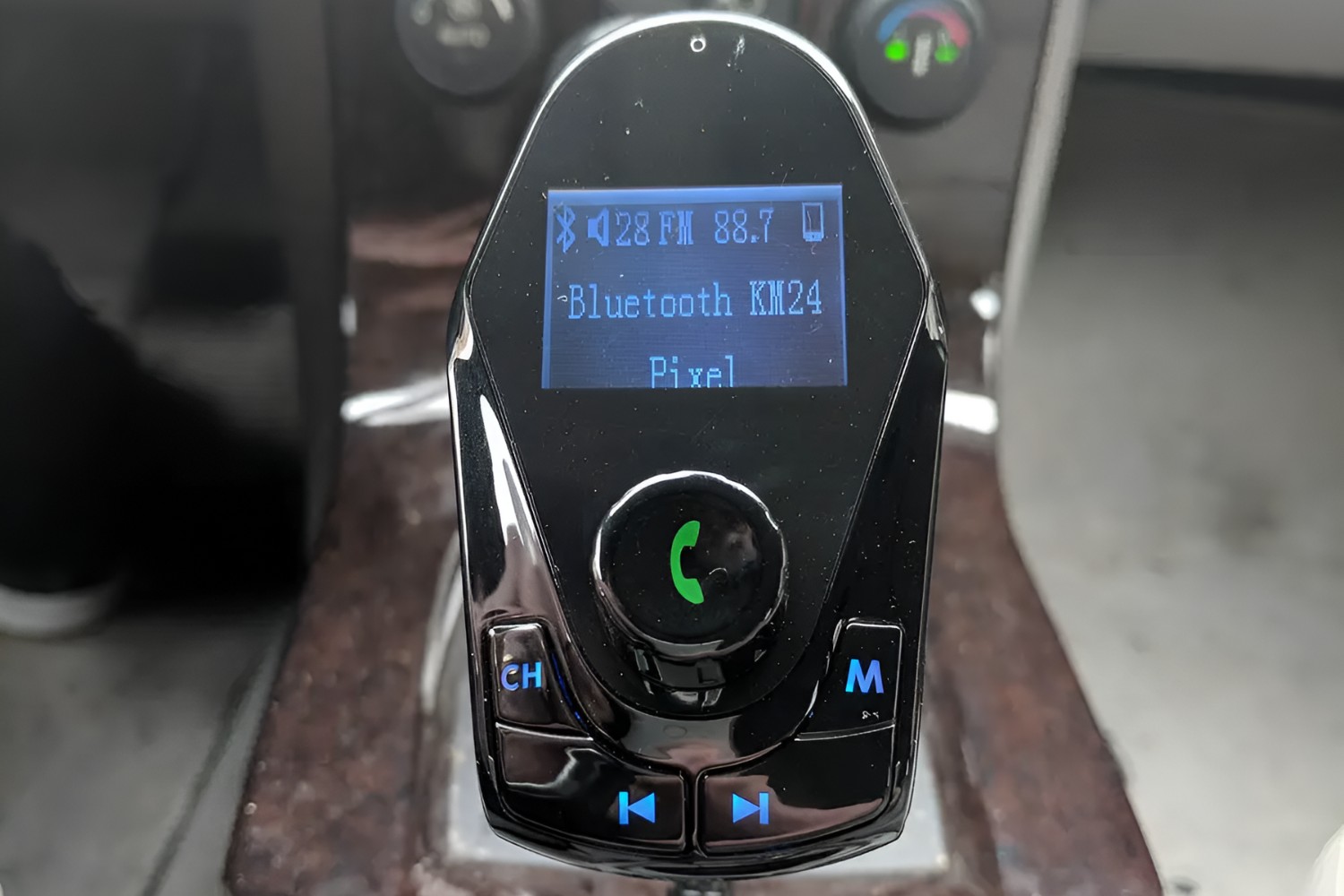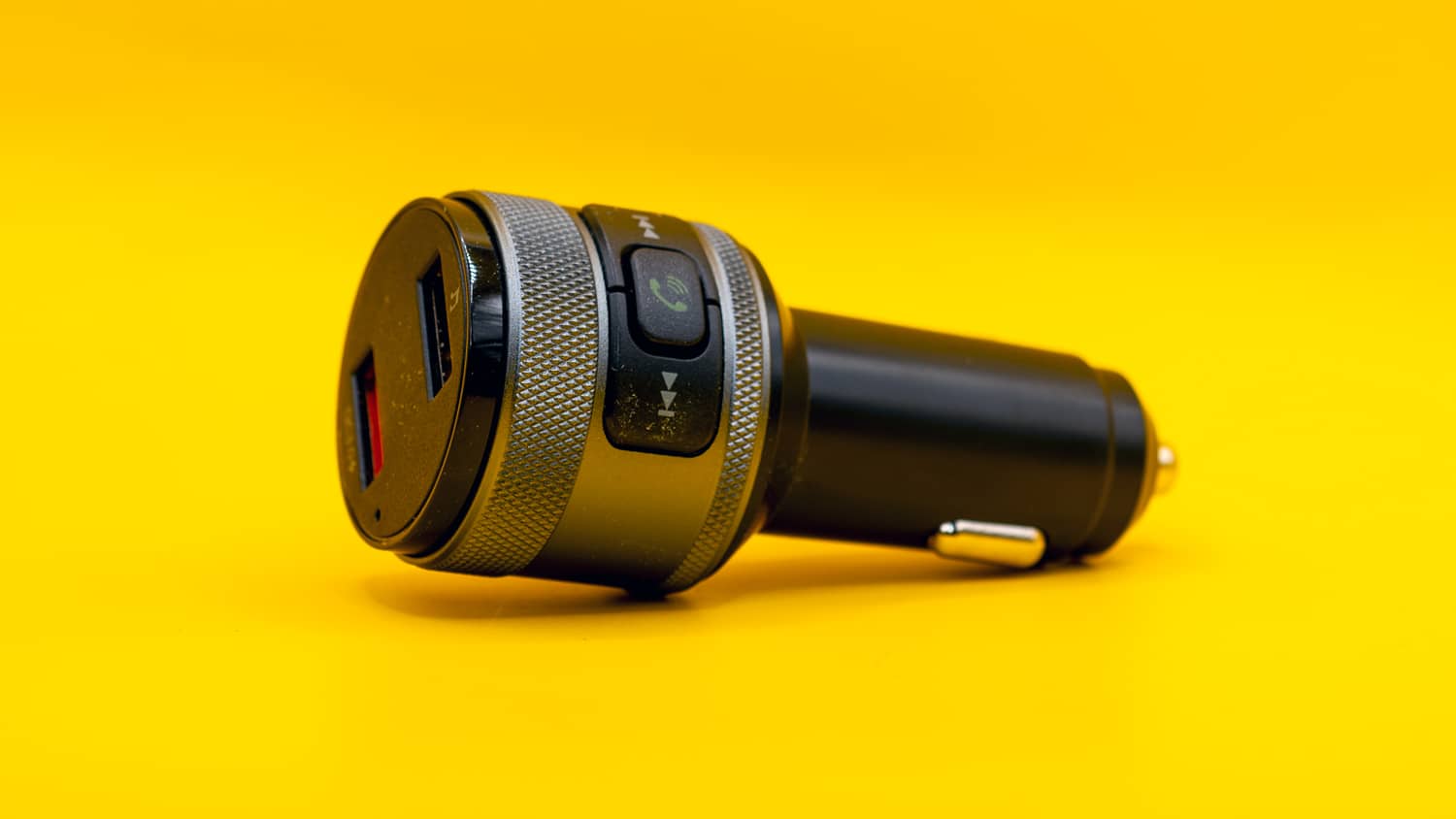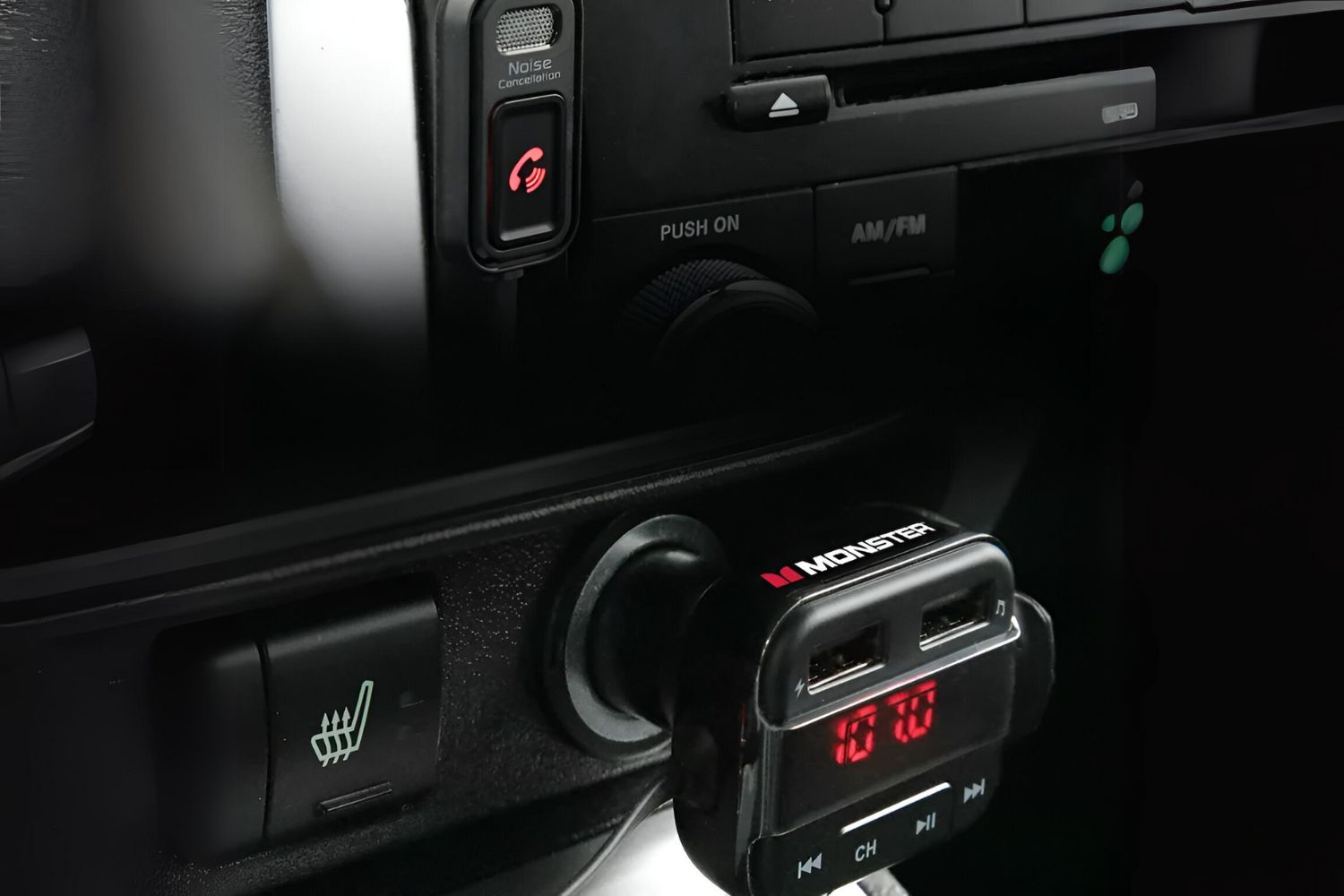Introduction
Radio frequency plays a crucial role in the transmission of radio signals, and finding the ideal frequency is essential for optimal performance of FM transmitters. In the world of wireless communication, radio frequency is the magic ingredient that enables us to tune in to our favorite radio stations, wirelessly stream music, and stay connected through various electronic devices. Understanding the significance of radio frequencies and how to find the ideal one is fundamental for anyone involved in setting up or troubleshooting FM transmitters.
In this comprehensive guide, we will delve into the intricacies of radio frequencies, explore the importance of finding the ideal frequency for FM transmitters, and provide valuable insights into the factors to consider and techniques to employ when choosing the most suitable radio frequency. Whether you are a seasoned radio technician, an aspiring radio enthusiast, or simply someone intrigued by the fascinating world of wireless communication, this article will serve as a valuable resource to deepen your understanding and mastery of radio frequency selection for FM transmitters.
With the rapid advancements in technology and the ever-expanding landscape of wireless communication, the ability to navigate and harness the power of radio frequencies has become increasingly vital. By gaining a deeper understanding of how radio frequencies function and the impact of selecting the right frequency, individuals can optimize the performance and reliability of FM transmitters, ensuring seamless transmission of audio signals across various channels.
Join us on this enlightening journey as we unlock the secrets of frequency mastery and empower you with the knowledge and expertise to identify the perfect radio frequency for FM transmitters. Let's embark on this exploration of radio frequencies, where we will unravel the complexities, unveil the significance, and equip you with the tools to conquer the realm of wireless communication with confidence and finesse.
Understanding Radio Frequencies
Radio frequencies are electromagnetic waves that are used to carry information through the air. In the context of FM transmitters, radio frequencies serve as the medium through which audio signals are transmitted wirelessly. These frequencies are measured in Hertz (Hz) and are typically in the range of millions to billions of cycles per second. Understanding the characteristics and behavior of radio frequencies is essential for effectively harnessing their power in the realm of wireless communication.
One fundamental aspect of radio frequencies is their wavelength, which is inversely proportional to the frequency. This means that higher frequencies have shorter wavelengths, while lower frequencies have longer wavelengths. For FM transmitters, the choice of frequency directly impacts the coverage area and signal quality. Higher frequencies can carry more data and are often used for shorter-range transmissions, while lower frequencies can propagate over longer distances but with a lower data-carrying capacity.
Moreover, radio frequencies operate within specific bands allocated by regulatory bodies such as the Federal Communications Commission (FCC) in the United States. These bands are designated for various applications, including FM radio broadcasting, television, cellular communication, and more. Understanding the regulatory framework and spectrum allocation is crucial when selecting a radio frequency for FM transmitters to ensure compliance with legal requirements and minimize interference with other wireless systems.
In addition, the behavior of radio frequencies is influenced by environmental factors and physical obstacles. Interference from buildings, terrain, and other electronic devices can affect the propagation of radio signals, leading to signal degradation and coverage limitations. Understanding how radio frequencies interact with the surrounding environment is essential for optimizing the performance and reliability of FM transmitters in real-world scenarios.
By comprehending the fundamental principles of radio frequencies, including their wavelength, regulatory allocation, and environmental interactions, individuals can gain a profound insight into the intricacies of wireless communication. This understanding forms the bedrock upon which the selection and utilization of the ideal radio frequency for FM transmitters are built, laying the groundwork for seamless and efficient transmission of audio signals across the airwaves.
Importance of Finding the Ideal Radio Frequency
The significance of finding the ideal radio frequency for FM transmitters cannot be overstated, as it directly impacts the performance, coverage, and reliability of wireless audio transmission. The choice of radio frequency serves as the cornerstone of effective communication through FM transmitters, influencing the reach of the signal, the quality of the audio transmission, and the overall user experience. Understanding the importance of selecting the optimal frequency is paramount for anyone involved in the setup, operation, or troubleshooting of FM transmitters.
One of the primary reasons for finding the ideal radio frequency is to ensure optimal signal coverage. By selecting a frequency that aligns with the specific transmission requirements, broadcasters and radio technicians can maximize the reach of the FM transmitter, extending the coverage area to reach a larger audience. Whether it's a local radio station aiming to reach listeners in a metropolitan area or a community radio serving a rural region, the choice of frequency directly determines the extent to which the audio signals can propagate through the airwaves, thereby influencing the accessibility and impact of the broadcast.
Moreover, the ideal radio frequency plays a pivotal role in mitigating interference and enhancing signal clarity. By carefully selecting a frequency that minimizes the risk of co-channel interference and adjacent channel interference, broadcasters can ensure that the transmitted audio signals remain robust and free from distortions caused by overlapping frequencies. This is particularly crucial in densely populated urban areas or regions with numerous radio stations, where the risk of signal interference is heightened. Finding the ideal frequency empowers broadcasters to deliver a seamless and uninterrupted listening experience to their audience, fostering a deeper connection and engagement with the content being transmitted.
Furthermore, the choice of radio frequency directly impacts the overall efficiency and performance of FM transmitters. By selecting a frequency that aligns with the transmitter's capabilities and the intended use case, radio technicians can optimize the utilization of available resources, minimize signal loss, and maximize the fidelity of the audio transmission. This is essential for maintaining the integrity of the broadcasted content and ensuring that the audience receives a high-quality listening experience, free from disruptions or signal degradation.
In essence, the importance of finding the ideal radio frequency for FM transmitters lies in its profound implications for signal coverage, interference mitigation, and overall transmission efficiency. By meticulously selecting the most suitable frequency, broadcasters and radio technicians can elevate the impact and reach of their transmissions, delivering a seamless and immersive audio experience to listeners while optimizing the performance of FM transmitters in diverse operational environments.
Factors to Consider when Choosing a Radio Frequency
When it comes to choosing the most suitable radio frequency for FM transmitters, several critical factors demand careful consideration to ensure optimal performance and reliable wireless communication. Understanding these factors is pivotal in making informed decisions that align with the specific transmission requirements and operational constraints. Let's explore the key considerations that play a pivotal role in the selection of the ideal radio frequency for FM transmitters:
-
Regulatory Compliance: Adhering to regulatory guidelines and spectrum allocation policies is paramount when selecting a radio frequency for FM transmitters. Regulatory bodies such as the Federal Communications Commission (FCC) in the United States allocate specific frequency bands for FM radio broadcasting. Ensuring compliance with these regulations is essential to avoid legal repercussions and minimize the risk of interference with other wireless systems operating within the allocated spectrum.
-
Signal Propagation Characteristics: Understanding the propagation behavior of radio frequencies in different environments is crucial for determining the ideal frequency. Factors such as signal attenuation, reflection, and diffraction can significantly impact the coverage area and signal strength. Higher frequencies are suitable for short-range transmissions with limited obstacles, while lower frequencies exhibit better penetration through buildings and terrain, making them ideal for long-range coverage.
-
Interference Mitigation: Mitigating interference from co-channel and adjacent channel signals is a key consideration when choosing a radio frequency. Analyzing the presence of other radio stations and electronic devices operating within the vicinity is essential to identify frequencies that minimize the risk of signal overlap and distortion. Employing frequency coordination techniques and spectrum analysis tools can aid in identifying interference-free frequencies for optimal transmission quality.
-
Equipment Compatibility: The compatibility of FM transmitters and receiving devices with specific frequency ranges is a critical factor to consider. Ensuring that the selected frequency aligns with the operational capabilities of the transmitter and receiver equipment is essential for seamless communication. Additionally, evaluating the frequency stability and tuning flexibility of the transmitter equipment is vital for maintaining signal integrity and reliability.
-
Environmental Factors: Environmental considerations, such as geographical terrain, urban density, and electromagnetic interference sources, play a significant role in frequency selection. Analyzing the impact of physical obstacles, such as buildings and natural terrain, on signal propagation can guide the choice of frequency to optimize coverage and minimize signal degradation in real-world operational scenarios.
By meticulously evaluating these factors and their implications on wireless communication, broadcasters and radio technicians can make informed decisions when selecting the ideal radio frequency for FM transmitters. This comprehensive approach ensures that the chosen frequency aligns with regulatory requirements, mitigates interference, optimizes signal propagation, and maximizes the overall performance and reliability of FM transmissions.
Techniques for Finding the Ideal Radio Frequency
Selecting the ideal radio frequency for FM transmitters requires a strategic approach that encompasses meticulous analysis, empirical testing, and technical expertise. By leveraging a range of techniques and tools, broadcasters and radio technicians can navigate the complex landscape of radio frequency selection to identify the most suitable frequency for seamless and reliable wireless communication. Here are the key techniques employed in the quest for the ideal radio frequency:
-
Frequency Spectrum Analysis: Utilizing specialized spectrum analysis tools and software, radio technicians can conduct a thorough analysis of the frequency spectrum in a given operational area. This involves scanning for existing radio signals, identifying potential sources of interference, and assessing the availability of clear frequency bands for FM transmission. Spectrum analysis enables informed decision-making by providing a comprehensive overview of the frequency landscape and potential challenges.
-
Frequency Coordination: Engaging in frequency coordination efforts with other broadcasters and wireless communication stakeholders is crucial for mitigating interference and optimizing frequency allocation. By collaborating with industry peers and regulatory bodies, broadcasters can access valuable insights into available frequency bands, coordinate transmission schedules, and minimize the risk of signal overlap. This collaborative approach fosters a harmonized use of radio frequencies, ensuring efficient spectrum utilization and reduced instances of interference.
-
Field Testing and Propagation Analysis: Conducting field tests to evaluate signal propagation characteristics in diverse environments is essential for identifying the most suitable radio frequency. By deploying test transmitters and receivers in target areas, radio technicians can assess signal coverage, penetration through obstacles, and signal strength variations. This empirical approach provides tangible data on how radio frequencies behave in real-world scenarios, guiding the selection of frequencies that optimize coverage and signal reliability.
-
Intermodulation Analysis: Analyzing intermodulation distortion and its impact on signal quality is a critical technique for identifying interference-free frequencies. By conducting intermodulation analysis, radio technicians can detect potential signal distortions caused by the interaction of multiple frequencies, allowing for the identification of clean frequency combinations that minimize distortion and preserve signal integrity. This meticulous analysis is instrumental in ensuring high-fidelity audio transmission free from intermodulation artifacts.
-
Environmental Surveys: Carrying out comprehensive environmental surveys to assess the impact of physical obstacles and electromagnetic interference sources on signal propagation is vital for frequency selection. By evaluating the geographical terrain, urban density, and the presence of electronic devices that may introduce interference, radio technicians can gain insights into the environmental factors that influence frequency performance. This knowledge enables the identification of frequencies that exhibit robust propagation characteristics in specific operational environments.
By leveraging these advanced techniques and methodologies, broadcasters and radio technicians can navigate the intricate process of finding the ideal radio frequency for FM transmitters. This multifaceted approach, encompassing technical analysis, empirical testing, and collaboration with industry stakeholders, empowers individuals to make informed decisions that optimize the performance, coverage, and reliability of wireless audio transmission.
Conclusion
In conclusion, the mastery of finding the ideal radio frequency for FM transmitters is a multifaceted endeavor that blends technical acumen, regulatory compliance, and environmental awareness. The journey of selecting the perfect frequency involves navigating a complex landscape of electromagnetic waves, regulatory frameworks, and real-world operational challenges. By delving into the intricacies of radio frequencies, understanding their propagation characteristics, and employing advanced techniques for frequency selection, broadcasters and radio technicians can unlock the potential of wireless communication with finesse and precision.
The significance of finding the ideal radio frequency resonates deeply in the realm of FM transmitters, where the choice of frequency directly influences signal coverage, interference mitigation, and transmission efficiency. From optimizing the reach of radio broadcasts to ensuring crystal-clear audio transmission, the impact of selecting the right frequency reverberates across the airwaves, shaping the listening experience of audiences and the operational performance of FM transmitters.
The factors to consider when choosing a radio frequency, including regulatory compliance, signal propagation characteristics, interference mitigation, equipment compatibility, and environmental influences, form the pillars upon which informed frequency selection decisions are made. By meticulously evaluating these factors, broadcasters and radio technicians can align their frequency choices with the specific transmission requirements, regulatory guidelines, and environmental dynamics, ensuring that the selected frequency harmonizes with the operational landscape.
Furthermore, the techniques for finding the ideal radio frequency, such as frequency spectrum analysis, coordination efforts, field testing, intermodulation analysis, and environmental surveys, empower individuals to navigate the intricate process of frequency selection with precision and confidence. Leveraging these advanced techniques enables radio professionals to harness the power of radio frequencies, mitigate interference, and optimize signal propagation, culminating in the seamless and reliable transmission of audio signals through FM transmitters.
As the landscape of wireless communication continues to evolve, the mastery of finding the ideal radio frequency for FM transmitters remains a cornerstone of operational excellence and audience engagement. By embracing a holistic approach that integrates technical expertise, regulatory awareness, and environmental insights, individuals can embark on a journey of frequency mastery, unlocking the full potential of FM transmitters to deliver captivating audio experiences that resonate across diverse audiences and operational environments.
In essence, the quest for the ideal radio frequency transcends the realm of technicalities, encompassing a profound understanding of the interplay between electromagnetic waves, regulatory frameworks, and environmental dynamics. It is a journey that empowers individuals to orchestrate seamless and immersive wireless communication, where the perfect frequency becomes the conduit through which the magic of audio transmission unfolds, captivating audiences and transcending the boundaries of connectivity.









